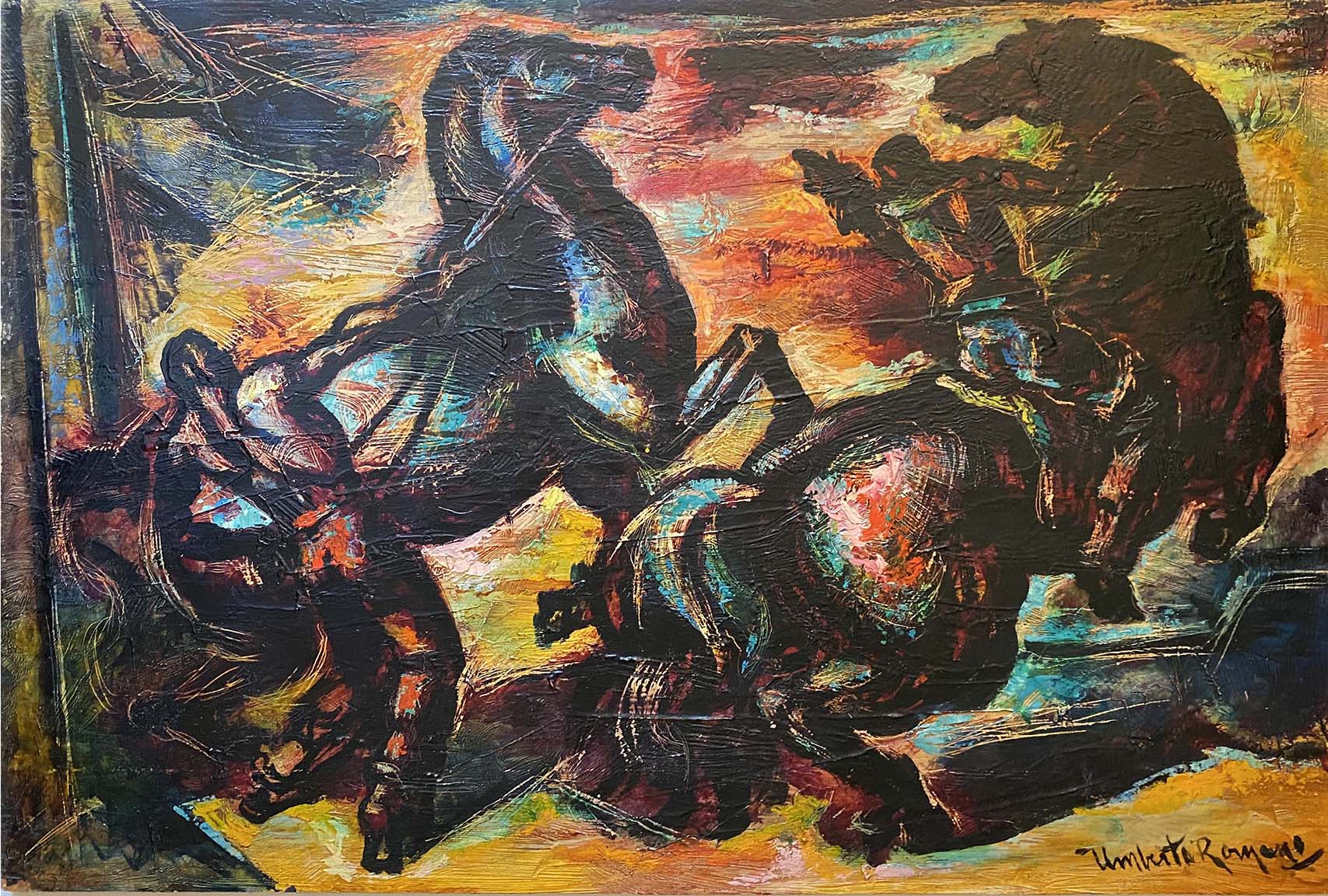Umberto Romano was a painter, sculptor, teacher and illustrator who did work embracing a wide variety of styles and influences. It is written that "Roman's versatility may have kept him from being easily classified", (Suite101.com) but his output reflects both a sincerity of responses at the time of their completion, and a wide range of emotions and world experiences.
He lived with his wife, Clorinda, in New York City, Gloucester, Worcester, and Provincetown, Massachusetts. He was born in 1906 in Bracigliano, Italy and emigrated to America with his parents when he was a child. The family settled in western Massachusetts. He showed early interest in art, and as a teenager enrolled at the National Academy of Design* in New York. A few years later he earned a Pulitzer Traveling Scholarship, which he used to study art in the museums in Europe. His self-portrait around this time, Psyche and the Sculptor, shows him wearing a skin-tight shirt, scarf, beret, and weight-lifting belt. "He holds a hammer near his crotch, a cocky symbol of his artistic and sexual prowess." (New England Journal)
After his period in New York followed by travel, he settled in Gloucester, Massachusetts in 1933. There he associated with painters and sculptors whose names remain famous as leading American artists: Stuart Davis, Marsden Hartley, John Sloan, Paul Manship and Milton Avery. These men influenced his styles and subjects, which included Art Deco*, Cubism*, Realism*, Expressionism*, and Regionalism*. It is written that after he left Gloucester for Provincetown in the mid 1960s, his style became increasingly abstract* and that "with loopy line drawings of naked ladies and 70s disintegrating bodies, it feels forced." (New England Journal)
In 1928, Romano had his first solo exhibition, which was held at New York's Rehn Galleries. The next year, he began giving art lessons on a boat in Rocky Neck, Massachusetts, and eventually in Gloucester, he purchased a larger space, the Gallery-on-the Moors, and opened the Romano School of Art. In the '30s, he also taught nearby at the Worcester Art Museum School and at the New York Academy of the Fine Arts*.
Reportedly his teaching style was "charismatic and impassioned", and he was very helpful with his students, while insisting on quality of work. He insisted "that art was a like a foreign language that needed to be studied fully in order to have true fluency and understanding." (Suite 101)
In 1935, Romano did work for the WPA* including a six-panel historical mural at the Post Office Building in Springfield, Massachusetts. He also painted the official portrait of Sara Delano Roosevelt, mother of United States President Franklin Delano Roosevelt. During World War II, he did paintings that increasingly reflected the turmoil he and others were experiencing with the sufferings of war victims. His work became darker and darker and more melancholic. In his painting, Cargo, his theme was a nearly naked, sun exposed Merchant Marine dying on a raft after Axis forces had sunk his ship. ("Merchant Marine cargo ships brought vital supplies to American troops during battle and were often attacked by enemy forces. Despite frequent casualties, Merchant Marines were not regarded as veterans and did not receive military honors or benefits." (Suite 101.com) The painting resembled a pieta "or one of the poor wretches in Theodore Gericault's early 19th century masterpiece, The Raft of Medusa." (New England Journal)
Additional painting was a Great Man Series, which included a portrait of Abraham Lincoln, done with a dribble technique, varied blue tones and heavy lines, all which contributed to a very introspective seeming figure. In the 1970s, he did a Glass Box Series where he placed representational "fragments" of humanity into glass cases, a concept partially prompted by Nazi Adolf Eichmann's being tried for World War II atrocities within a bulletproof glass booth.
Romano died in New York City in 1982. His work is in many leading museums such as the Whitney, Smithsonian, and Cape Ann Historical Museum. His portrait of Abraham Lincoln is in the Presidentlial Library collection. Among his exhibition venues were the Carnegie Institute and Chicago Art Institute.
His son, U. Roberto (Robin) Romano is a social realist photographer and documentary film maker.
In 2007, the Cape Ann Historical Museum had a survey of Umberto's painting titled: Man Sings of Man: Umberto Romano, 1906-1982.

